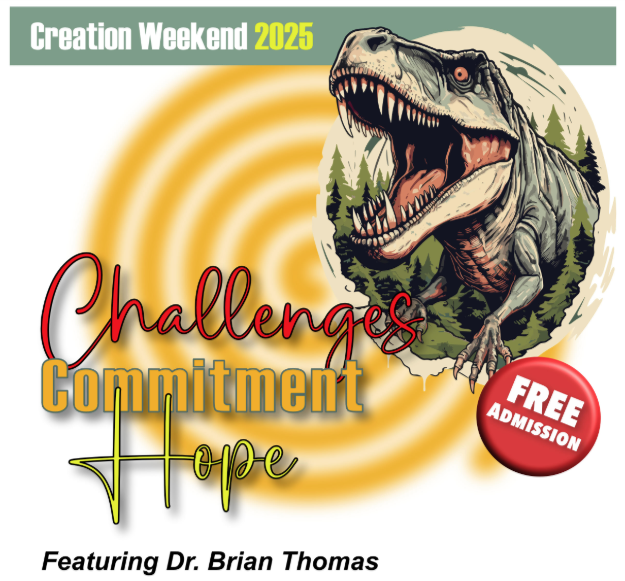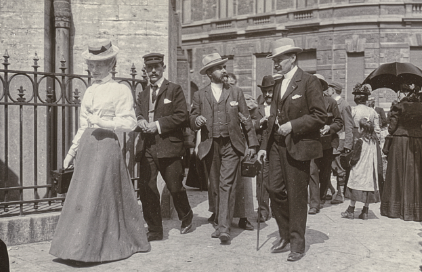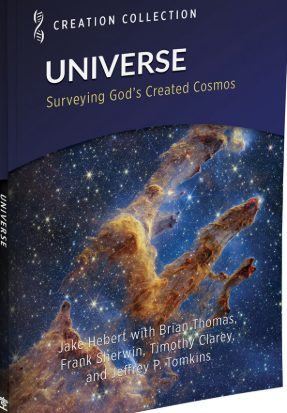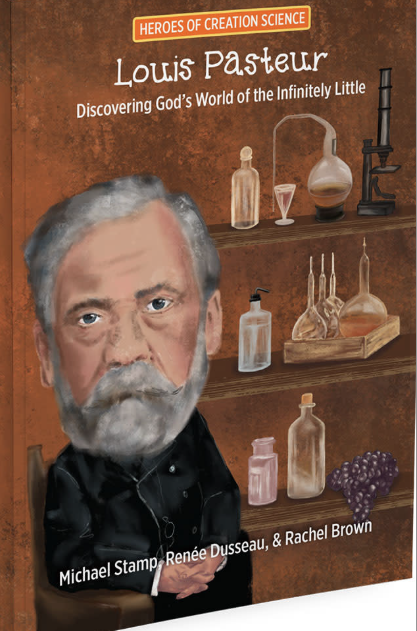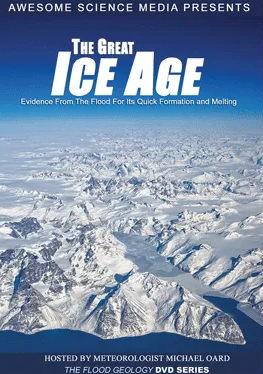Dialogue
Dialogue 2025 #3 (August)
About the Creation Science Dialogue
The Creation Science Dialogue is a quarterly publication of the Creation Science Association of Alberta (CSAA). Subscribe for the print or online edition.
Creation Weekend with Dr. Brian Thomas
More information about Dr. Brian Thomas
Exciting free presentations
October 24 and 25, 2025
Sessions – Friday at 7 pm, Saturday at 10 am and 1:15 pm
Providence Canadian Reformed Church
(12905 122 Ave NW, Edmonton, Alberta)
Event details:
Poster (downloadable)
Handout (downloadable)
Understanding genetics was so straightforward back in the good old days. I am not sure when those days were, but our picture of control systems in our bodies was easier when obvious stretches of DNA, called genes, were believed to control specific traits like eye colour and blood type. It used to be that we talked about genes and ‘junk DNA’. Now there are genes and there are control systems. It was the use of supercomputers which changed our understanding of how the human genome works.
Read the rest of this entry »Back in the days when television was new to North American society, there was a show called Perry Mason. This featured a lawyer who specialized in courtroom drama. In predictable fashion, Mr. Mason set out to defend an accused person, but the facts of the case looked very discouraging for the defendant. However, thanks to great sleuthing by Perry Mason’s two assistants, some important new details were discovered. In the courtroom, as the show drew toward a close, Mr. Mason triumphantly asked a witness, “Isn’t it true that ….?” And some new facts were revealed which changed the whole story. Everyone was all smiles when the defendant was exonerated. The point is that partial information can lead to wrong conclusions.
Read the rest of this entry »Commercial movies come and go and many are soon forgotten. Of those movies that I saw as a university student, there is only one that I remember. Inherit the Wind was the lesser feature on a double bill in a small theatre in Quebec. But the content packed a powerful message! The story line was about a trial involving Christian townsfolk in an American town who were ignorant and boorish, as opposed to evolution supporting educators there who were informed and civilized. Everyone understood that the movie claimed to portray an actual event, the Scopes Trial of July 1925 in Dayton, Tennessee. Thus, we reflect on the centenary of this trial which some claim represents the most significant trial of the century. What was it all about, and what is its legacy?
Read the rest of this entry »The importance of the mineral calcium phosphate to living organisms can hardly be overstated. It is used by many organisms, including humans, to build their bones and skeletons. This is especially true for fish, crustaceans, and some brachiopods. Besides that, and even more importantly, phosphate ions are required for major building blocks of life, such as DNA and RNA. It is also required for the production of adenosine triphosphate (ATP)—the molecular fuel of living cells (Brady, Tostevin and Tosca 2022).
Evolutionists struggle to explain how life could have arisen from non-life—a concept known as “abiogenesis” or “spontaneous generation.” One of the problems is the importance of phosphate ions for biological molecules and the prohibitively low concentrations of phosphates in nature for those molecules to form spontaneously. There just isn’t enough phosphate. Phosphate minerals tend to be insoluble under most conditions, so only trace amounts exist as dissolved minerals in seawater. In fact, on average, seawater contains only about 0.071 parts per million of phosphorous (Simandl, Paradis and Fajber 2012).
Read the rest of this entry »Small boys love stories about large earth moving equipment. They love to look at the pictures, identify the types of machine and hear the stories again and again. Other children love to identify dinosaur pictures or birds. Even long after the children have grown up, they value these books as important mementos.
Read the rest of this entry »Some scientific words come from what was originally everyday language, but the concept has long been almost forgotten. Take the word ‘chaperone’ for example. Until recent times, a chaperone was a respectable mature lady who needed to be present on any social occasion to ensure that courting couples conducted themselves in a sedate and appropriate fashion. That certainly sounds old fashioned, doesn’t it? There was even a play written, called Charley’s Aunt, by Brandon Thomas (about 1890), that lampooned the efforts of two young Englishmen to entertain some young ladies to tea. In order to do this, they needed a chaperone to be present. They therefore persuaded another male friend to masquerade as a rich aunt from Brazil so that the tea party could take place. Hilarious escapades and disasters followed (including the real aunt showing up).
Read the rest of this entry »Challenges, Motivation and Hope
Featuring
Dr. Brian Thomas
Research Scientist at the Institute for Creation Research, Dallas, Texas
Location:
Providence Canadian Reformed Church
12905 122 Avenue NW Edmonton, AB
SCHEDULE
Friday, Oct 24 @ 7:00 p.m.
Fresh Fossils from Four Continents
(especially family friendly) Have you heard about the blood vessels from dinosaur bones? It turns out that’s just the beginning of fresh features from all kinds of fossils. In this presentation, Dr. Thomas explains how we can know that these proteins are relatively young and how these exciting new finds fit with the Bible’s history of the world.
Saturday, Oct 25 @ 10:00 a.m.
The Beginning of Life
(design features extraordinaire) Using information you won’t find in secular biology textbooks, Dr. Thomas demonstrates the complete failure of natural processes to explain how life began. He critiques evolutionary speculations about the beginning of life and illustrates engineered precision in cellular machines that credit the Creator, not nature, with creating life.
Saturday, Oct 25 @ 11:30 a.m. – 12:15 p.m.
Annual General Meeting
Saturday, Oct 25 @ 12:15 p.m. – 1:15 p.m.
Noon Break
Saturday, Oct 25 @ 1:15 p.m.
How Creatures Adapt
(why Darwin’s explanatons don’t work) New studies into the nuts and bolts of creature adaptation keep refuting Charles Darwin’s old ideas about how creatures change. From finches to fishes, stunning animal adaptations revel new hallmarks of handiwork.
Free Admission
www.create.ab.ca
In the early years of the existence of Creation Science Association of Alberta, CSAA brought in many excellent speakers from the Institute for Creation Research. All these speakers were scientists with excellent experience and credentials. These included biochemist Dr. Duane Gish, geologist Dr. Steve Austin and biologist Dr. Gary Parker. In more recent years, ICR moved from California to Texas and set about becoming established in a new region. Now once again, CSAA is delighted that one of ICR’s research scientists, Dr. Brian Thomas, has agreed to be our featured speaker for Creation Weekend on October 24 and 25, 2025. The sessions are scheduled to take place at Providence Canadian Reformed Church which hosted the event in spectacular fashion in October 2024 (12905 122 Avenue NW in Edmonton).
Read the rest of this entry »Past Issues
- Dialogue 2025 #3
- Dialogue 2025 #2
- Dialogue 2025 #1
- Dialogue 2024 #2
- Dialogue 2024 #1
- Dialogue 2023 #3
- Dialogue 2023 #2
- Dialogue 2023 #1
- Dialogue 2022 #3
- Dialogue 2022 #2
- Dialogue 2022 #1
- Dialogue 2021 #3
- Dialogue 2021 #2
- Dialogue 2021 #1
- Dialogue 2020 #3
- Dialogue 2020 #2
- Dialogue 2020 #1
- Dialogue 2019 #3
- Dialogue 2019 #2
- Dialogue 2019 #1
- Dialogue 2018 #3
- Dialogue 2018 #2
- Dialogue 2018 #1
- Dialogue 2017 #3
- Dialogue 2017 #2
- Dialogue 2017 #1
- Dialogue 2016 #3
- Dialogue 2016 #2
- Dialogue 2016 #1
- Dialogue 2015 #3
- Dialogue 2015 #2
- Dialogue 2015 #1
- Dialogue 2014 #3
- Dialogue 2014 #2
- Dialogue 2014 #1
- Dialogue 2013 #3
- Dialogue 2013 #2
- Dialogue 2013 #1
- Dialogue 2012 #3
- Dialogue 2012 #2
- Dialogue 2012 #1
- Dialogue 2011 #3
- Dialogue 2011 #2
- Dialogue 2011 #1
- Dialogue 2010 #3
- Dialogue 2010 #2
- Dialogue 2010 #1
- Dialogue 2009 #3
- Dialogue 2009 #2
- Dialogue 2009 #1
- Dialogue 2008 #2
- Dialogue 2008 #1
- Dialogue 2007 #3
- Dialogue 2007 #2
- Dialogue 2007 #1
- Dialogue 2006 #4
- Dialogue 2006 #3
- Dialogue 2006 #2
- Dialogue 2006 #1
- Dialogue 2005 #4
- Dialogue 2005 #3
- Dialogue 2005 #2
- Dialogue 2005 #1
- Dialogue 2004 #4
- Dialogue 2004 #3
- Dialogue 2004 #2
- Dialogue 2004 #1
- Dialogue 2003 #3
- Dialogue 2003 #2
- Dialogue 2003 #1


